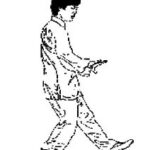 Past studies have been criticized because of poor study design, according to Prof. Ernst.
Past studies have been criticized because of poor study design, according to Prof. Ernst.
Researchers from Bastyr University tighten up the design and report their results.
First, the details.
- 251 adults were screened and 32 were enrolled in the study.
- Age- and sex-matched participants were randomly assigned to 1 of 3 groups.
- Qigong: 60-minute weekly sessions plus twice-weekly home 30-minute sessions
- Control
- Progressive resistance training (PRT): 60-minute weekly sessions plus twice-weekly home 30-minute sessions
- Participants maintain their diabetes care.
- All were taking oral diabetes medication; none were taking insulin.
- The Bastyr University Institutional Review Board approved the study protocol, and informed consent was obtained from all participants.
And, the results.
- Blood sugar levels
- There were significant reductions with qigong over time (185 vs. 162 mg/dL).
- In contrast, the PRT and control groups had no change.
- Fasting blood sugar levels
- The qigong group significantly improved vs the PRT group and the control group.
- A1c
- Remained unchanged in the control group.
- A1c declined slightly with PRT and qigong, but not significantly.
- There were no other significant changes.
The bottom line?
The authors concluded, “Qigong therapy for 12 weeks resulted in significant reductions in fasting glucose levels in patients with type 2 diabetes and demonstrated trends toward improvement in insulin resistance and A1c.”
Tai chi and qigong are similar but not identical. The main differences involve how the form is practiced, how the energy is manipulated, the body posture, and whether the practice is done alone. More about that is here.
However, it’s interesting that researchers from China used tai chi (1 hour per day, 5 days a week for 14 weeks) and reported a significant reduction tin A1c. Their study and others who reported positive effects of tai chi on A1c are summarized here.
2/28/10 20:54 JR